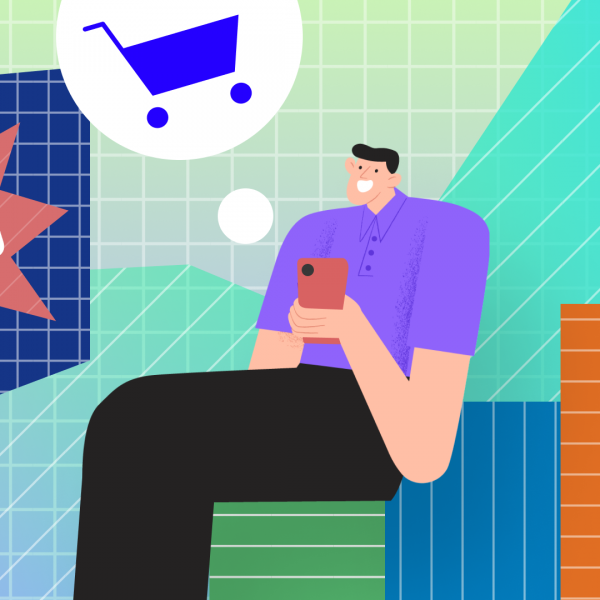
Customer data online is getting more protected with new privacy-related announcements from Google and Apple. Marketers already have to comply with GDPR in Europe, CCPA in California, etc., and recent changes are going to influence marketing effectiveness measurement even more. After third-party cookies are eliminated and iOS 14.5 update is rolled out, the effectiveness and accuracy of some measurement approaches will suffer. This article will help you understand how the changes will affect the tools you are currently using and what solutions you should add to your measurement arsenal to ensure business growth.
Google has announced that it is going to phase out third party cookies in its browser Chrome by 2022, and Firefox 86 already has a total cookie protection feature. Another piece of news comes from Apple, that has released an update for iPhone with a new privacy-related feature. IDFA tracking used to be enabled by default, and now you can opt out of in-app ad tracking, and 88% of iOS 14.5 users globally have already done so, which led to a negative reaction from Facebook and ad spending drop.
The IAB Advertising Effectiveness Council couldn’t ignore this fundamental change and prepared a guideline for advertisers to help them navigate through the challenge. Below are the main takeaways from their paper.
Measurement methodologies that are going to be hit the hardest in the post-cookie world are Multi-Touch Attribution and other campaign effectiveness measurement activities especially those based on attribution.
MTA assigns credit to touchpoints on consumer’s path to purchase. It provides almost real-time insight in campaign performance, but it usually gives too much credit to digital media. Even though MTA models can analyze campaigns with offline conversion points too, they don’t consider OOH or linear TV, media channel synergy, base sales and non-media factors. There are enough limitations to this tool as it is, but as a result of cookie phase-out it will be impossible to reconstruct the full path to purchase and identify unique visits to a website, because more than half of ad platforms, data vendors, publishers, etc. rely on third-party cookies. Simplified Last Touch models can be used instead to address the challenge, yet they don’t offer a comprehensive analysis.
Third-party cookies were crucial to building a single user identity out of emails, phone numbers and other pieces of data. Without them, tracking a customer’s journey is only possible if a campaign doesn’t spread beyond a walled garden, which is not a common practice. That’s why marketers should seek new, people-based identity solutions.
To optimize the use of MTA today advertisers need to:
- consider identity solutions;
- rely on server side APIs to become browser independent;
- use large research data panels that comply with privacy regulations;
- add noise to data to prevent customer identification (it will slightly affect accuracy, but it’s a necessary trade-off)
- add other solutions to their measurement toolkit.
As for measuring the effectiveness of campaigns in terms of unique audience, reach and frequency, this methodology still highly depends on cookies. In-app measurements won’t be affected as much, since there are constant user IDs, but taking into account Apple’s updates, it will also become useless if customers opt out of cross-app tracking. In the long term there is a need for a universal identifier solution; as for now, you should turn to people-based data and start collecting customer data through an own app.
These dramatic changes are going to reshape the industry landscape, yet there are methodologies that almost won’t be affected by their influence and can provide accurate results.
Viewability, brand safety, ad and audience verification: these metrics represent digital quality, and they do not rely on cookies to function. There will be no problem verifying that an ad has been viewed, or that impressions and clicks are real. Anyway these metrics aren’t enough to tell if an ad is effective, so a further analysis is needed. To ensure brand safety contextual targeting can be used: it analyzes online content to see if it is a suitable placement option for a given brand. The functionality of solutions for the tasks above won’t be disrupted by the demise of cookies in any way.
Brand studies: they include a number of tools for measuring brand metrics (awareness, consideration, intent, etc.). To collect this kind of data survey responses are usually used. Even though we need third-party cookies to check if a consumer has seen the advertising, there are alternative ways to verify ad exposure. And in the long term advertisers should run on-site surveys to use first-party cookies or cooperate with publishers and vendors to get specific access to the needed data.
Sales lift experiments: this tool shows the contribution of advertising to incremental sales by observing the difference between a test and control group. Controlled experiments can be applied to both digital and offline media, and even to see how channels influence each other. Phase-out of cookies will reduce the quality of results, as there will be gaps in sales data. To address the challenge advertisers should focus more on first-party data, work with measurement partners and run sophisticated geo experiments.
Marketing Mix Modeling: As you can see in the figure below, MMM uses statistical methods to forecast sales or any other business KPIs based on various media and non-media factors. It accounts for all major sales drivers such as online and offline advertising, factors that are under advertiser influence and those out of their control (even COVID-19).

To build a model you need three years of historical data on marketing activities and target KPIs. Today MMM can be applied in different business sectors to evaluate cross-media campaigns and mutual influence of different ad channels. With a comprehensive data set of high quality you can measure the financial contribution of each channel in your media mix. Whether it’s programmatic ads or directly bought media, weekly exposure data for modeling can be provided by ad servers, and there is no need for cookies. The key to getting accurate measurements is to clean and verify the data for modeling.
In cases where no historical data is available, such as during a new product launch or market entry, a metamodeling approach can be employed. It relies on benchmarks and data from another product with similar characteristics (industry type, market stage, media mix, etc.) to create forecast models.
Out of all tools mentioned in the article Marketing Mix Modeling is the one that guarantees complete and accurate evaluation of your marketing activities even after privacy-related updates announced by Apple and Google come into force.
AdoptoMedia offers an advanced MMM solution combined with AI that allows building models within a matter of minutes and automatically update them with ingestion of new data. And when actual data is in the system, campaign reports are visualized in the form of dashboards. Our flexible platform can be seamlessly integrated into the company’s existing IT infrastructure, and it’s easy to operate, so you will manage it yourself after we complete the implementation process. All our modeling algorithms are available to the client, models pass over 20 statistical tests and the data is thoroughly cleaned and verified. With AdoptoMedia’s solution, clients in financial and pharmaceutical sector, telecom, pharmacy, FMCG achieved exponential growth through optimal budget allocation, successfully launched products to the market and expanded their market share. Try AdoptoMedia to forecast and maximize ROMI, reduce CAC, run “what if” scenarios and see what really works in your media mix and what can be improved.


